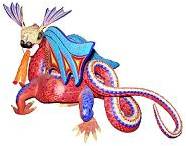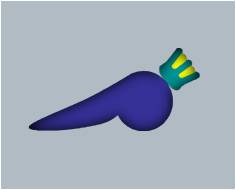 Before the Spanish Conquest (1519-1521), music was a vital part of social life. Information about Aztec, Mayan, and Tarascan music has been transmitted in archeological remains and in reports by early Spanish missionaries. The must important native instruments were drums, like the teponaztli and the huehuetl, and flutes. Many remanents of pre-Conquest music have been passed on in Mexican rural culture, past and present, has been inspired many Mexican composers.
Before the Spanish Conquest (1519-1521), music was a vital part of social life. Information about Aztec, Mayan, and Tarascan music has been transmitted in archeological remains and in reports by early Spanish missionaries. The must important native instruments were drums, like the teponaztli and the huehuetl, and flutes. Many remanents of pre-Conquest music have been passed on in Mexican rural culture, past and present, has been inspired many Mexican composers.
European art music quickly took root and flourished in 16th and 17th century. Musical institutions and music making centered around the church, especially the cathedrals in Mexico City, Puebla, and Valladolid (now Morelia). New works by Spanish composers quickly made their way to Mexico, and music was composed in Mexico by immigrants like Hernando Franco (1532-1585), Pedro Bermúdez (fl. 1600), Juan Gutiérrez Padilla (ca. 1590-1664), and Francisco Lopez-Capillas (ca. 1615-1673). Polyphonic music of the period is preserved in manuscript choirbooks, especially in the archives of the Mexico City and the Puebla cathedrals. There was a substancial demand for monophonic music as well. At least 13 books containing liturgical texts and plainchant were printed in Mexico befote 1600.
During the 18th century, secular and instrumental music became more important. The Coliseo nuevo theater, rebuilt in 1753 in Mexico City, presented zarzuelas, tonadillas, sainetes, and incidental music to dramas. After Independence (1810-1821), and especially 1830s on, Italian opera dominated the Mexican stage. Even Mexican composers, such as Cenobio Paniagua (1821-1882), and Melesio Morales (1838-1908), wrote operas with Italian librettos, other important composers were Jesús González Rubio ( d. 1874) known for his Jarabe Tapatio and Clemente Aguirre (1828-1900) who in 1877 wrote "Marcha Nacional" to honoured Mexican participants awarded in the International Exposition at Filadelfia (U.S.A.) for the 100 years of U.S.A. Independence (1776-1876) -Mexican President Porfirio Diaz committed to him and played in Mexico City-. In the late 19th century, salon music for piano, much of it by Mexican composers, flourished among the upper classes.
The Mexican Revolution, which began in 1910, wrought fundamental changes in art music. Composers of the revolutionary generación turned to Mexican folk music, and even to pre-Conquest Aztec music for inspiration. Manuel M. Ponce (1882-1948), Carlos Chávez (1899-1978), Silvestre Revueltas (1899-1940), and José Pablo Moncayo (1912-1958) were outsatnading representatives of this movement. Julián Carrillo (1875-1965) is principally known for his use of microtones. From 1950s on, musical nationalism abated somewhat, and internacional contemporary idioms gained influence. The trend may be heard in the later music of Chávez and Blas Galindo (1910-1993) and his works by Rodolfo Halffter (1900-1987), Manuel Enríquez (1926-1994), Mario Kuri-Aldana (b. 1931), Hector Quintanar (b. 1936), Eduardo Mata (1942-1995), and Mario Lavista (b. 1943).


